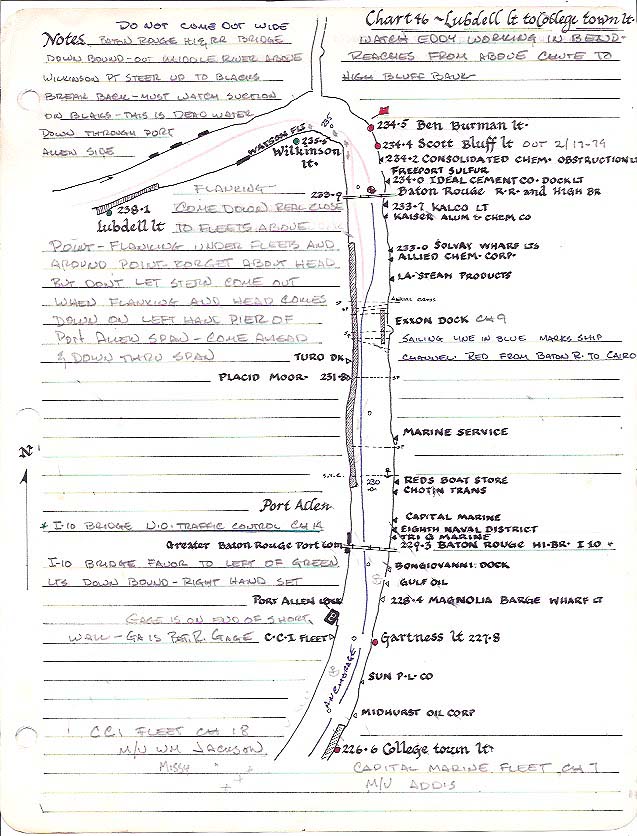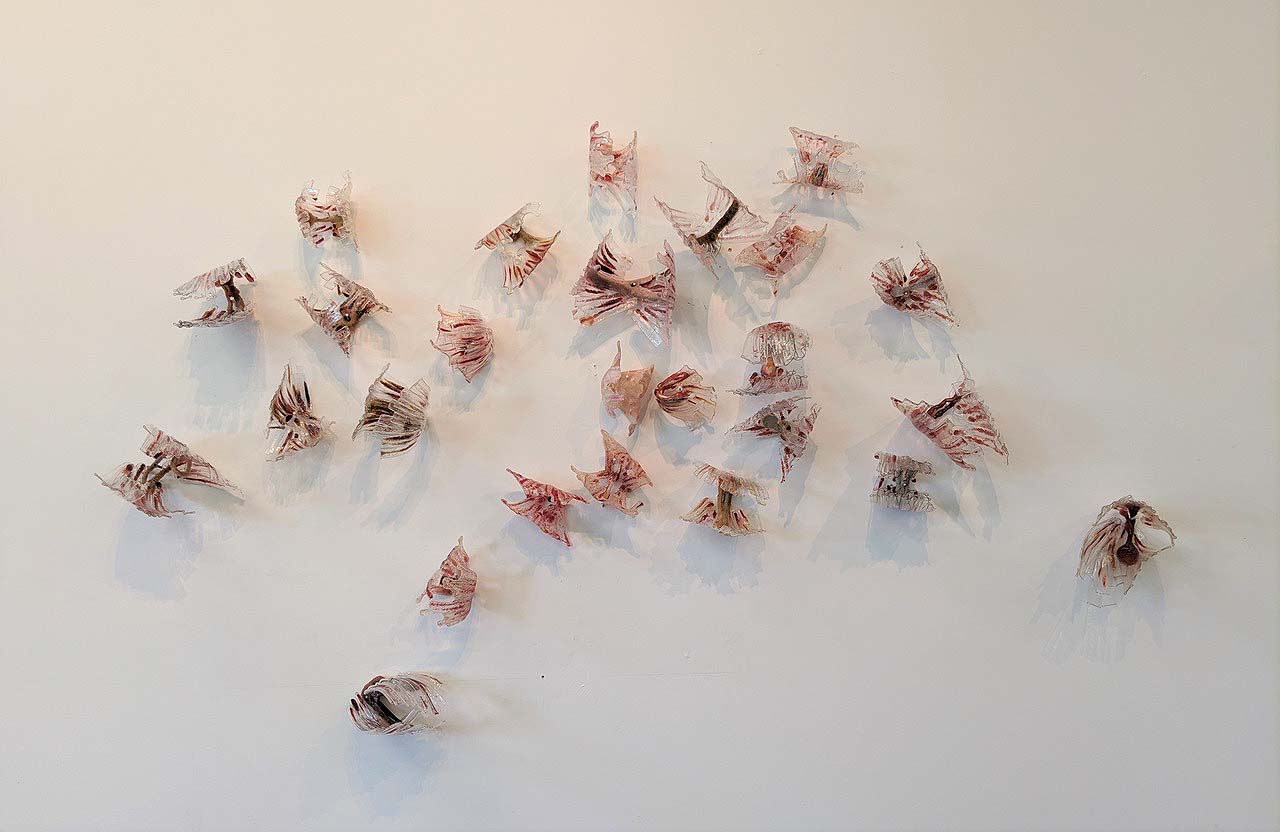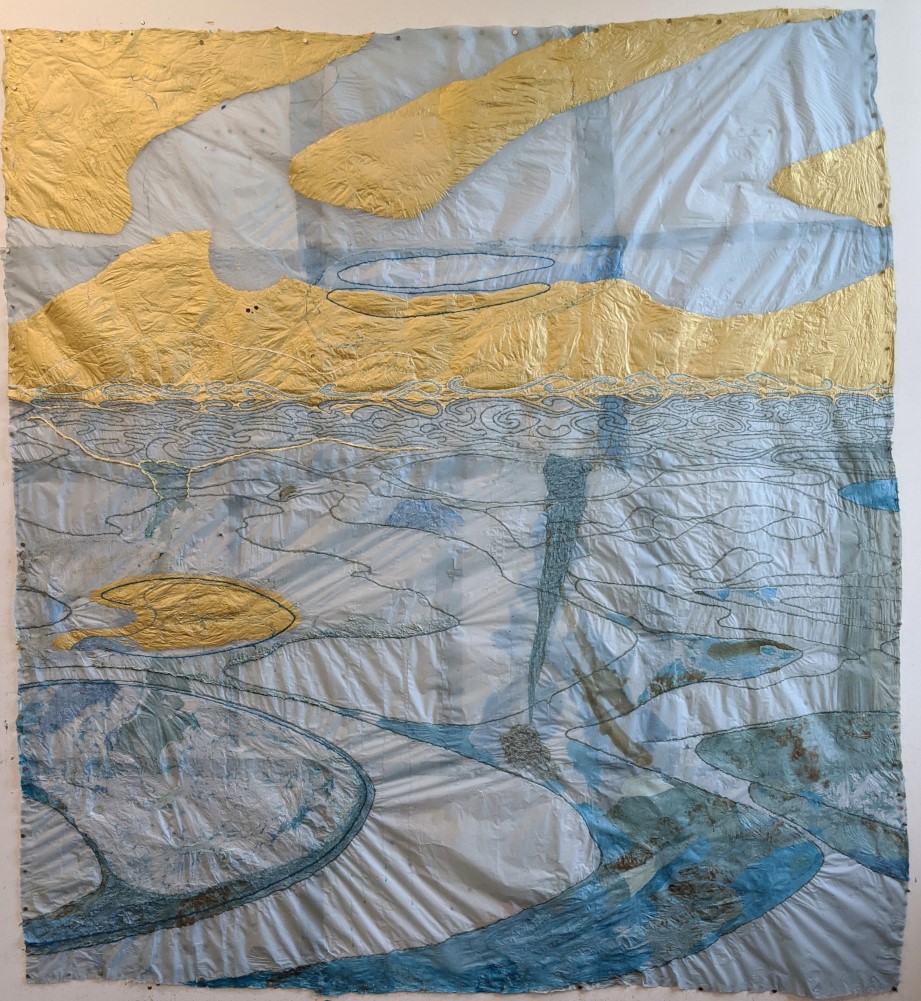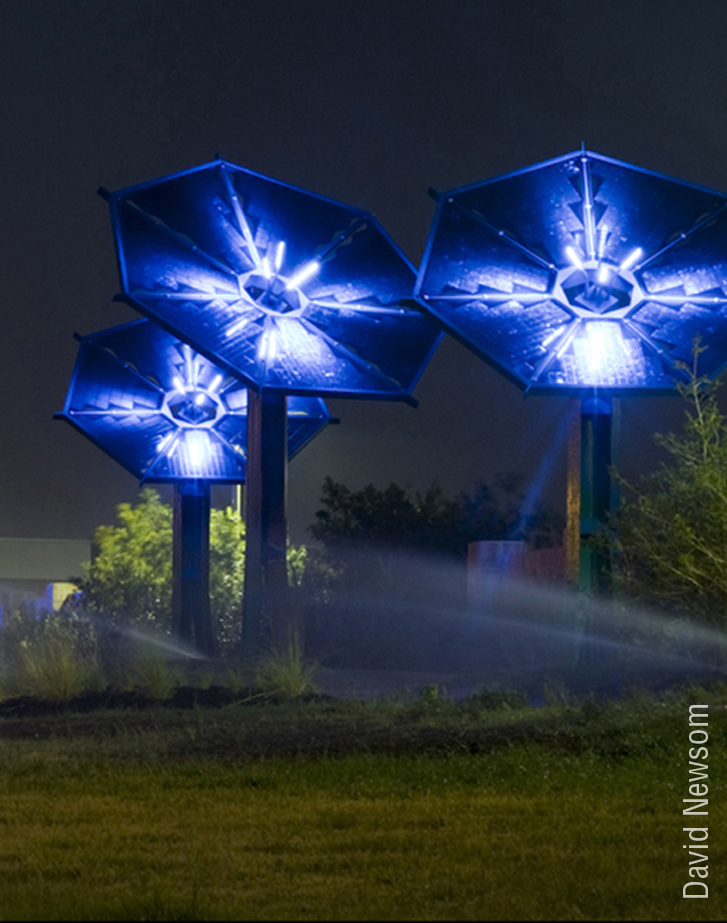Art gives context to our lives, helping us understand our moment in history and fortifying us to surmount our challenges. At a time when we struggle with COVID, climate, economic, and racial justice crises, two artists – Rita Rogers and Nancy Cohen – operating in very different contexts offer works that evoke both resilience and strength.
Rita Rogers of Newport, RI is a talented painter, teacher, art restorer and printmaker. When Charlie Duncan, her partner of 20 years died, she poured her grief into a series of large (36” x 40” or more) paintings that honor his memory.
During his 79 years, Charlie had held a variety of occupations from sign-maker to city council member. Rita found herself drawn to the one that had most closely connected him to nature. As a pilot and towboat captain, Charlie had guided mammoth commercial barges through the hazards of the winding lower Mississippi River. He had created a series of hand-drawn charts of the river, adding calligraphic notes marking the location of obstacles and inserting navigational wisdom, such as “ease back on engine” here or “watch suction” there.

Charlie Duncan’s navigational chart of the lower Mississippi River. ©2020 Rita Rogers. Courtesy of Rita Rogers.
Rita began painting the Mississippi – which she dubbed “Charlie’s River” – as seen through his eyes. She remained true to Charlie’s charts of the river’s course, but gave herself free rein to depict the surrounding landscape. The resulting paintings differ widely – from colorful to monochromatic, dynamic to calm.
Over time, Rita noticed that the paintings became “more open.” The last in the series, one of the simplest, “had an otherworldliness to it.” The river enters the canvas boldly from the left and takes a sharp, downward turn, forming an upside-down “J” and rending the canvas in two. The water’s bold white tone contrasts starkly with the patchy, deep blue landscape on either side, like light piercing the darkness. She deemed this final glimpse of the river “the goodbye painting I wanted to do in the beginning.”

Rita Rogers, Charlie’s River: Final Painting in the series. ©2020 Rita Rogers. Courtesy of the artist.
In hindsight, she observes: “This was a way of grieving…of dealing with loss…of still being in contact with the person who was not here anymore.” Having processed her grief, she wants to share her solace with others: “I want somebody to see [the paintings.] I want that thought – that visual thought – to reach somebody else.”
Hear Rita discuss her Charlie’s River paintings in this video.
Nancy Cohen in Jersey City, NJ has focused her career on depicting the urban waterway’s struggle to survive, especially in a time of climate change. In spring 2019, her art celebrated the beauty and resilience of two widely different coastlines: Maine’s formerly industrial Eastport harbor and the Dominican Republic’s still relatively undeveloped, but vulnerable, Samana Bay. Her works from this period have a light, airy tone – festive, vibrant colors hinting at future triumph.

Nancy Cohen, Song of These Times. Glass, metal, wire. ©Nancy Cohen 2020. Courtesy of the artist.
2020 proved to be a much more challenging year. Song of These Times is Nancy’s sculptural response to COVID-19. Tacking Home recalls a darker moment in Samana Bay, when a simple navigational error turned a planned 3-hour sail into a harrowing 12-hour struggle to reach port. The darkness of the moment and the changing directions of wind and water dominate the work.

Nancy Cohen, Tacking Home. Paper pulp and handmade paper. ©Nancy Cohen 2020. Courtesy of the artist.
A subsequent work, Espiritu Santo, began as an effort to depict a joyful travel experience. Nancy and her colleagues had endured a hot, challenging climb to the top of a mountain. To their delight, they had witnessed a mesmerizingly beautiful view of the changing tide. As Nancy later painted the scene, the sadness of 2020 crept into even this most joyous reflection – the water had a decidedly dark tone. Eventually, Nancy added notes of gold, giving the finished image “spiritual and ephemeral qualities attuned to this moment.”

Nancy Cohen, Espiritu Santo (2020). Paper pulp and handmade paper. © Nancy Cohen 2020. Courtesy of the artist.
While COVID 19 has yet to run its course, Nancy observes: “I am grateful to be an artist with a studio to process all that we are experiencing in this moment.” And, like Rita, she is pouring her energy into art that shares insights gained from a transformative life event.
For an Honoring the Future exclusive, Nancy takes us inside her studio to view her latest climate art. Learn how COVID has sharpened her focus on the tension between fragility and strength in humans and in our environment.

